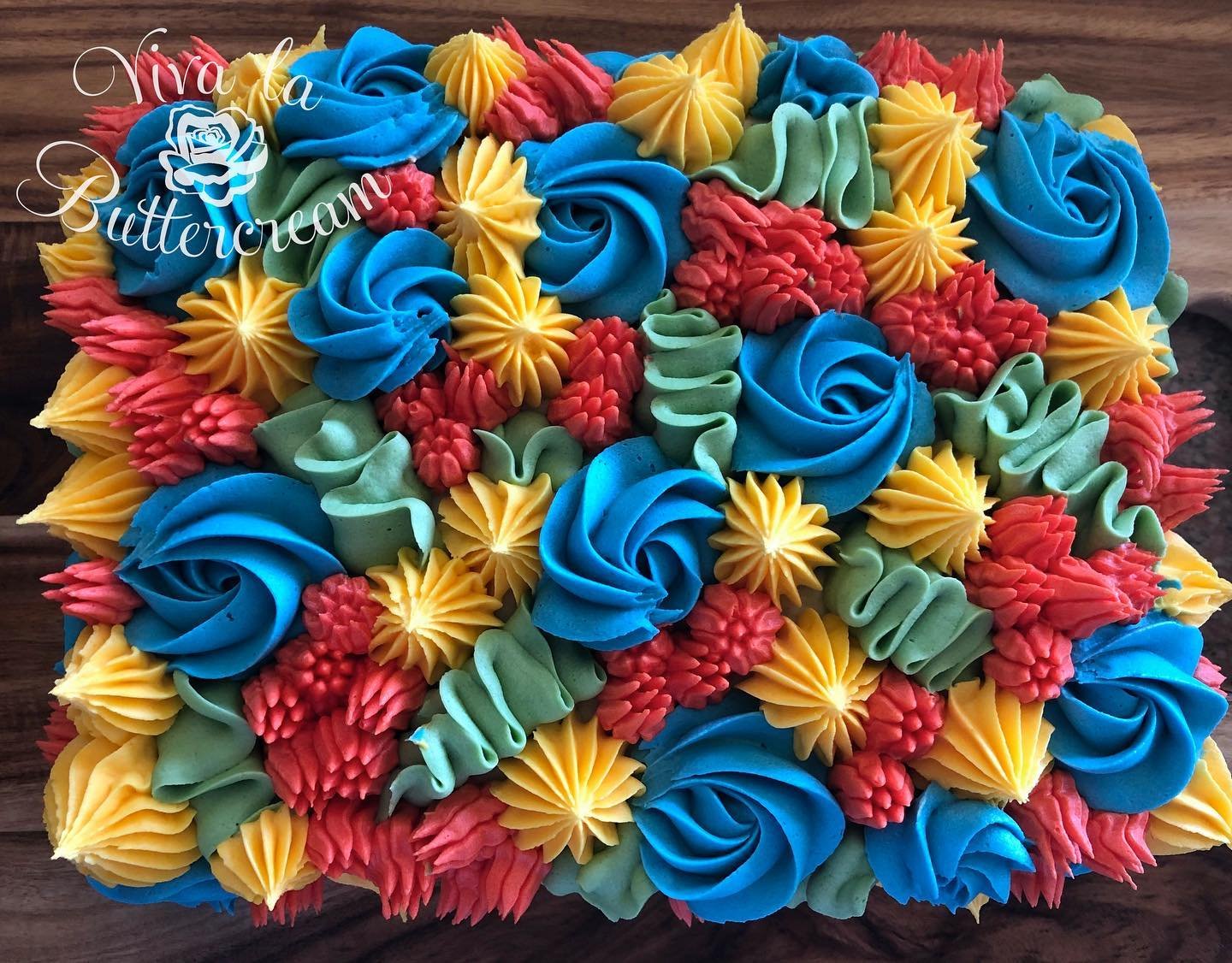Colouring Basic Buttercream
Colouring Buttercream is not quite as straight forward as you might think.
For a start, butter is yellow. Yellow! Which means if you add blue, you don't get blue, you get Green! Sorcery!
So how do you colour buttercream? What types of colours should you use? And how do I get White Buttercream?
Whiter Shade of Pale
There are a few ways to lighten Buttercream, and there are upsides and downsides to most.
Option one is adding purple food colouring.
Sounds wacky, but think of it like a toner after dying your hair blonde. The purple is added, in really really small amounts, to wash out the yellow.
The only downside of this method is getting the shade right, which can be tricky, especially if like me you do a lot of Buttercream colouring at night, when the light is dodgy.
Option two is adding a whitening agent, like Titanium Dioxide.
Its effective, but you will need to add quite a bit to get true white, especially if you are using a darker yellow brand butter (another reason why Lurpak butter is awesome by the way).
The problem with adding so much Titanium Dioxide, especially in liquid form, is that it messes with your consistency, and can add a pretty odd taste in large quantities.
Option three is a combination of both.
Other options for perfectly white finishes, without using fondant, include making a "Decorator's Buttercream" of shortening and icing sugar. On the plus side, it's perfectly white, on the downside, it has either a bad taste, or no taste, unless you add flavouring (which would need to be clear, otherwise you just wasted your time!)
The other option is a final coat Decorator's Buttercream, OVER Basic Buttercream, which gives you a perfectly white finish, over delicious Buttercream. Win win!
In Living Colour
Avoid liquid colours! Not only are they no where near as vibrant as gel and powdered colours, but they will thin your buttercream, which is not good.
Choosing which shade to use can be tricky too. I highly recommend doing a colour test if you are not sure. It's a great way to decide on what colours you want to use, and you can also see how much of a particular colour you will need to get the shade you want, without running the risk of over colouring a whole batch of buttercream.
For vibrant colours, you will need to add a fair bit of colour for a brilliant result, but before you get RSI squeezing an entire bottle of colour into a single batch of buttercream, let it rest for at least an hour before you use it (ideally overnight), as colours darken over time.
For black Buttercream, I highly recommend that you start with Chocolate Buttercream if you plan to mix up a whole batch, rather than a small detail batch. Not only does the addition of the dark brown cocoa powder give you a head start in colouring, but it also helps to hide the strong taste of black food colouring.
When using strong colours like red, blue, and black, its a good idea to ice your cake in natural Buttercream, then do a ‘final coat’ in the strong colour.
Not only do you need to mix up less coloured Buttercream, but it also means less ‘food colour flavour’, which can really put some people off their cake!
Viva La Buttercream x


